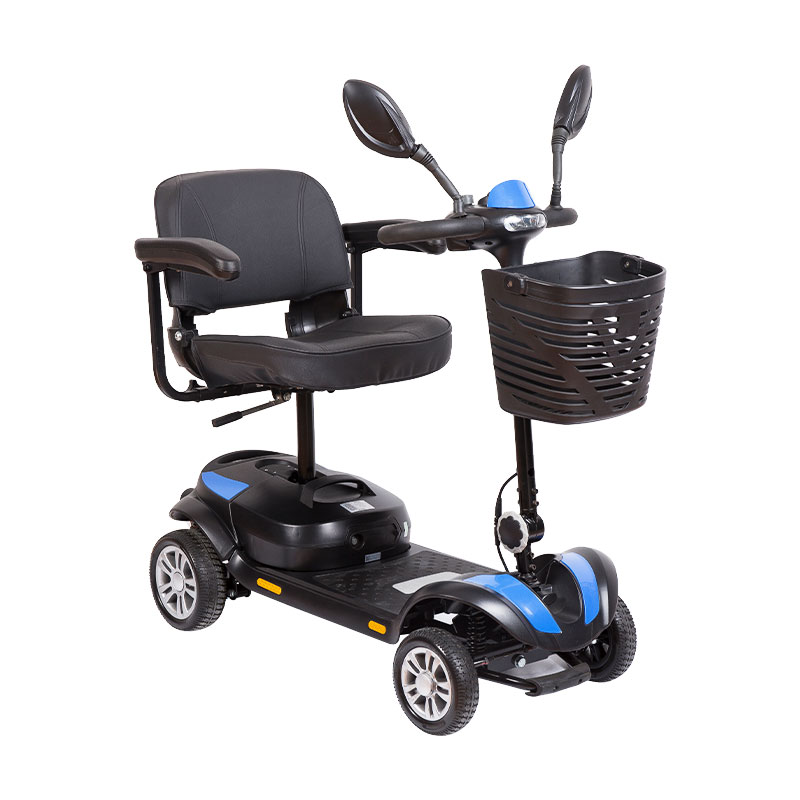How is the Elderly Electric Wheelchair designed to be operated by the elderly?
Elderly Electric Wheelchairs are designed to be operated by the elderly with a focus on simplicity, safety, and ease of use. Here are key design considerations to ensure that elderly individuals can operate these wheelchairs effectively:
1. Intuitive Joystick Controls:
- The primary control interface is a joystick, which is designed to be easy to grasp and manipulate. It allows for precise control of the wheelchair's movement with minimal effort.
2. Simplified Button Layouts:
- Control panels are streamlined and feature large, well-labeled buttons for functions like power on/off, speed adjustment, and horn. These buttons are strategically positioned for easy access.
3. Single-Touch Functions:
- Many electric wheelchairs have single-touch buttons for common actions like stopping, turning, or changing speed settings. This reduces the need for complex button combinations.
4. Adjustable Sensitivity:
- Joystick sensitivity is often adjustable to accommodate users with varying levels of hand dexterity. Users can customize the joystick's responsiveness to their comfort.

5. Safety Features:
- Emergency stop buttons are prominently located and easily accessible, allowing users to quickly halt the wheelchair in case of an emergency or safety concern.
6. User-Friendly Displays:
- LCD or LED displays provide clear information about battery status, speed, and other essential data. These displays are designed to be easy to read, even for users with vision impairments.
7. Voice Commands and Speech Recognition:
- Some advanced models offer voice command capabilities, allowing users to control the wheelchair using verbal instructions, making it more accessible for individuals with limited hand mobility.
8. Bluetooth and Smartphone Integration:
- Electric wheelchairs can be paired with smartphones or tablets, enabling users to control the chair remotely via mobile apps. This familiar interface can be especially helpful for tech-savvy seniors.
9. Visual and Auditory Feedback:
- Visual indicators, such as LED lights or icons, and audible alerts (beeps or voice prompts) provide feedback to users, helping them understand the chair's status and surroundings.
10. Customizable Controls:
- Some models allow users to customize the control interface, including button assignments and joystick behavior, to better match their preferences and capabilities.
11. Emergency Release Mechanisms:
- Wheelchairs are equipped with easily accessible emergency release mechanisms, allowing users or caregivers to disengage the chair's power quickly.
12. Anti-Tip and Collision Avoidance Systems:
- Advanced electric wheelchairs incorporate anti-tip and collision avoidance systems that automatically adjust speed and direction to prevent tipping or collisions, enhancing overall safety.
13. Progressive Controls:
- The chair's controls can be designed to respond to the extent of joystick movement. A gentle push may result in slow movement, while a more significant push will accelerate the chair, providing finer control.
These design considerations collectively aim to provide elderly users with a control interface that is user-friendly, safe, and tailored to their needs and abilities, ensuring that they can operate electric wheelchairs with confidence and independence.


 English
English Deutsch
Deutsch







-3.jpg?imageView2/2/format/jp2)
.jpg?imageView2/2/format/jp2)






